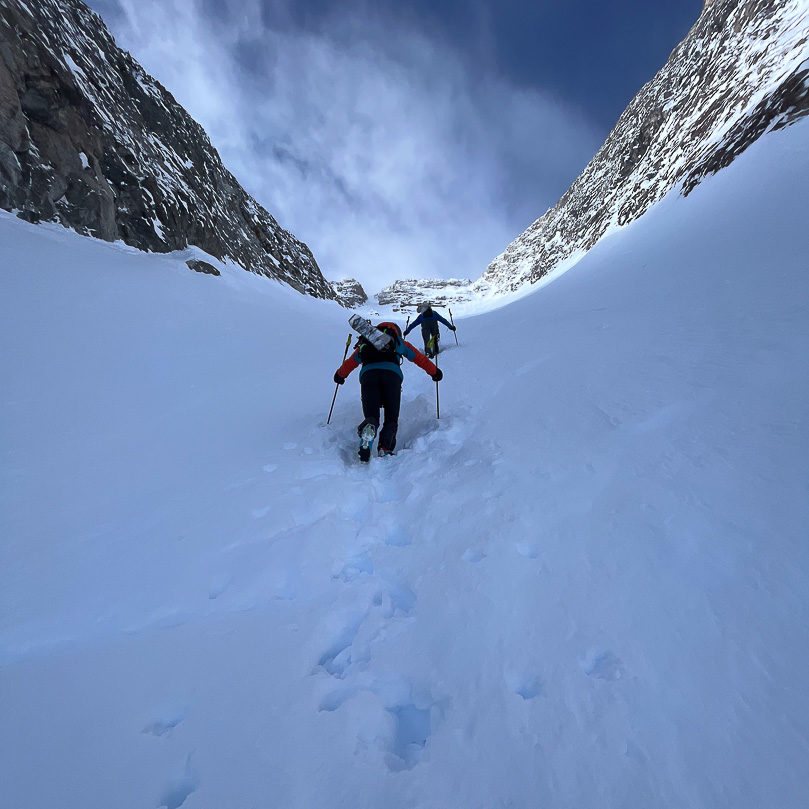
An all snow kick step affair—an all aluminum crampon, with either a rigid or Dyneema linkage works great. Photo: Aidan Whitelaw
Sam Hennessey helps discern how to select the right crampon for the spring ski/ride objective you might have in mind.
Spring can be an exciting season: longer days, safe (er) snowpacks, and a full winter’s worth of fitness can make it an ideal time to get up high and break out of the monotony of low angle powder that often dominates the colder months. Early mornings, sunrise above treeline, standing on summits. What’s not to like? Aside from the inherent hazards in entering this type of terrain, the equipment you bring will change a bit, and consequently, so will the weight of your backpack. There’s a lot of metal stuff out there that you might want to bring along, and it’s a little overwhelming to try and sort through it all. There’s an incredible diversity of gear on offer, and every company has its marketing pitch, whether it’s “designed by a pro” (good luck with that), “guide tested” (who cares?), or “the lightest on the market” (uncomfortable and will break instantly). So how do you choose what to buy and, more importantly, what to bring?
The number one consideration should always be the objective you have in mind. Do you plan to climb steep snow? Will you be on rock at all? Will there be sustained icy sections? Will it be necessary to belay or rappel? For me, these questions lead to the right answer for gear selection, starting with the most important part of your kit: crampons. The right choice in crampon can make the difference between a sketchy, terrifying climb up (or down), and a casual hike. You’ll definitely know if you got it wrong. There are, of course, many different types of crampons out there. To start, you need to decide whether you want a rigid center bar. For skiing, I almost exclusively choose crampons with a flexible center bar for reduced weight and improved packability. However, they do have their drawbacks. Namely, if you do not have the fit as tight as possible, they could fall off, and certain brands do not use very robust material, so they can break. This type of failure is obviously not ideal, so it’s crucial to closely inspect them after every use and to carry a spare string or two if one starts to cut.
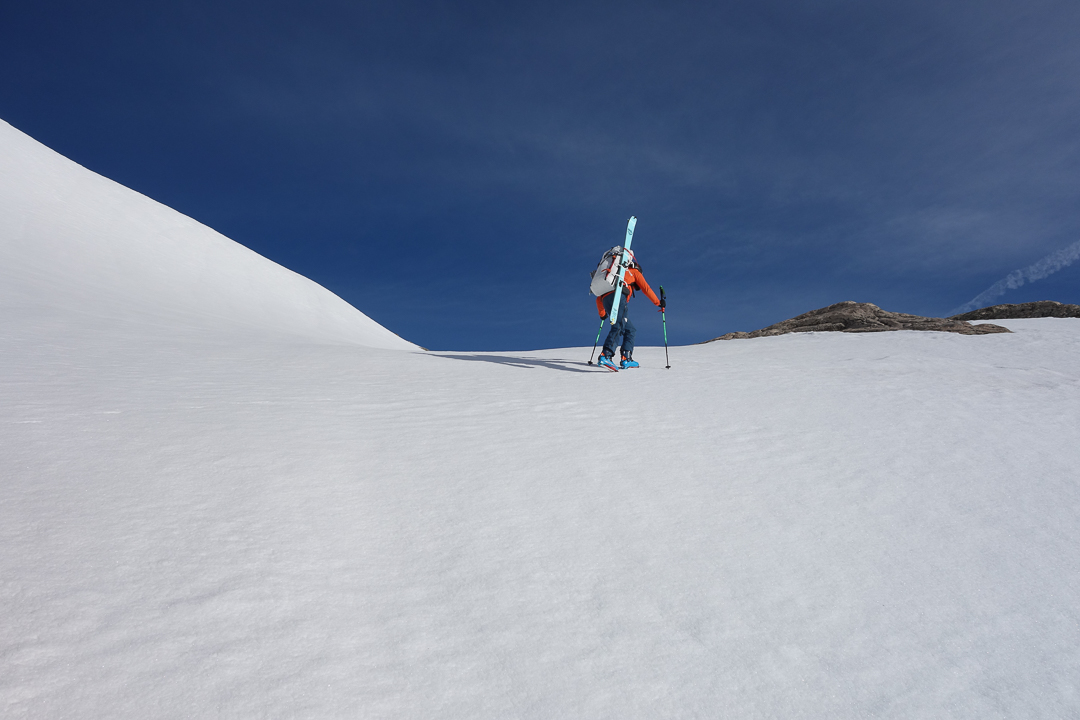
Firm snow walking-solid all aluminum crampon terrain. If you suspect you’ll be tangling with some rock, it makes sense to use a hybrid crampon, with a steel front, and aluminum rear. Photo: Kelly Cordes
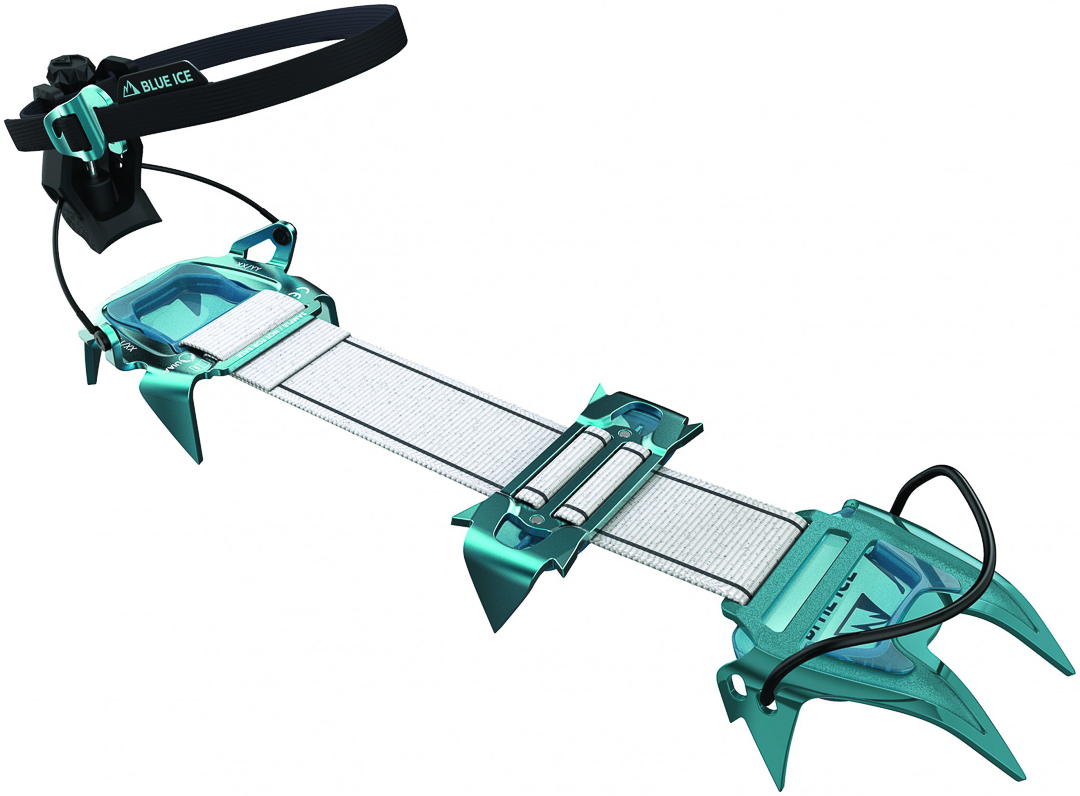
The Blue Ice Harfang Tour. An example of an all aluminum crampon suitable for snow and less steep ice. Photo: Blue Ice
Your next decision concerns the metal your crampons are made of. Generally, you have two options: aluminum or steel. Aluminum is much lighter but dulls quickly if you even touch rock. Steel is heavier but more effective for climbing ice and often comes in diverse shapes that can improve performance on rock, ice, or snow. For me, full aluminum crampons are an appropriate specialty tool only when I’m not planning to climb anything other than steep snow. The weight savings with full aluminum are simply not worth it when you consider the loss of efficiency and decrease in security on any other terrain type.
The sweet spot, for the majority of objectives, is a hybrid crampon that uses steel in the front half and aluminum in the heel piece. You don’t actually use your heel piece for that much most of the time, so it’s not the end of the world if it gets dull, and the weight savings are noticeable. Most often, a steel front with two horizontal front points will be appropriate, but a vertically oriented dual or monopoint might be the better choice for more technical objectives. You may choose a full steel crampon for very technical objectives, but this is a rare scenario in my experience.
So it’s as easy as that: think about your objective, choose aluminum, hybrid, or steel, make sure they fit your boots and don’t forget to trim the straps so they aren’t flapping around.

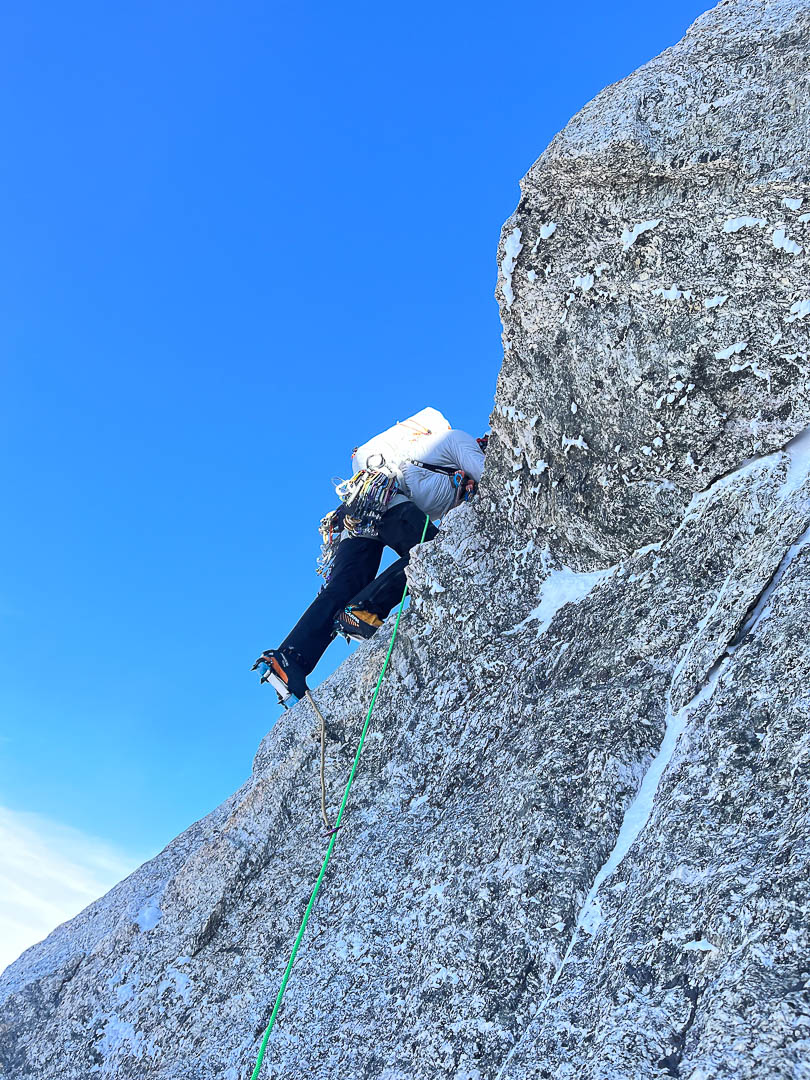
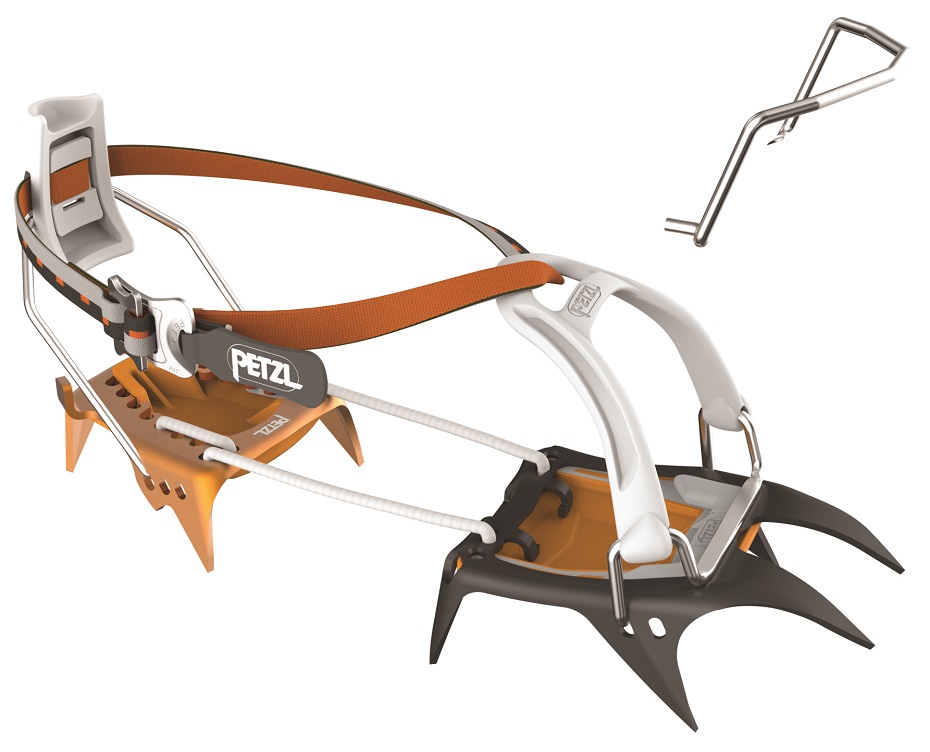
For me too, I chose the half steel, half aluminum crampons, with 10 points and flexible connector, as the one pair I bought.
I figure, the weight and space savings of the flexible 10 point models is worthwhile, since they spend so much time inside your pack. At the same time, choosing steel front parts doesn’t add any space, just some weight.
Of course owning both steel and aluminum front parts (for models that are sold separately) is ideal, but for people like me, choosing just 1, I chose steel front.
I figure that if there is firm snow and ice, that means there was wind or melting, both of which also tend to expose rocks on ridges and summits, so the chance of needing to walk on rock for a bit, is fairly high.